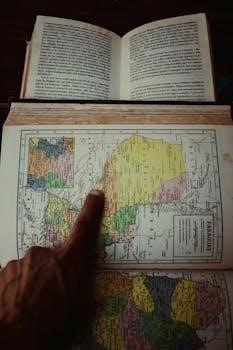Doll mark reference guides are essential tools for collectors. These guides assist in identifying doll manufacturers‚ origins‚ and approximate ages. They encompass maker’s marks‚ mold numbers‚ and various symbols‚ aiding in the precise identification of dolls.
Doll identification is a fascinating journey into the world of antique and collectible dolls. It involves a combination of observation‚ research‚ and a keen eye for detail. Identifying a doll accurately can unlock its history‚ revealing its maker‚ origin‚ and approximate age. This process is crucial for collectors‚ historians‚ and anyone interested in preserving the legacy of these cherished objects.
The first step in doll identification is a thorough examination of the doll’s physical characteristics. This includes noting the materials used in its construction‚ such as bisque‚ porcelain‚ composition‚ or vinyl. Observing the doll’s features‚ such as the type of eyes (glass‚ painted‚ sleeping)‚ hair (wigged‚ rooted‚ painted)‚ and clothing details‚ provides valuable clues. The doll’s size and overall condition are also important factors to consider.
Once the initial assessment is complete‚ the next step is to search for any markings on the doll. These markings‚ often found on the back of the head‚ neck‚ torso‚ or feet‚ can provide crucial information about the doll’s manufacturer and origin. However‚ doll identification extends beyond just finding a mark; it’s about understanding what that mark signifies and how it fits into the broader context of doll history.
Importance of Doll Marks
Doll marks are paramount in the world of doll collecting and identification‚ serving as crucial pieces of evidence that unlock a doll’s history and value. These marks‚ often discreetly placed on the doll’s body‚ provide invaluable information about its manufacturer‚ origin‚ and production period. Understanding the significance of doll marks is essential for collectors‚ researchers‚ and anyone seeking to authenticate and appraise these cherished objects.
Doll marks act as a signature‚ linking the doll to a specific maker or company. This identification allows collectors to trace the doll’s lineage and understand its historical context. Marks can also reveal the country of origin‚ helping to distinguish between dolls produced in Germany‚ France‚ the United States‚ or other doll-making centers. Furthermore‚ marks often include mold numbers‚ which indicate the specific design and size of the doll.
The presence and legibility of doll marks significantly impact a doll’s value. Dolls with clear‚ identifiable marks from reputable manufacturers are generally more desirable and command higher prices in the market. Conversely‚ dolls with damaged‚ illegible‚ or missing marks may be more difficult to authenticate‚ potentially affecting their value. Therefore‚ understanding and interpreting doll marks is an indispensable skill for anyone involved in doll collecting or appraisal.

Common Locations of Doll Marks
Identifying doll marks requires a keen eye and a systematic approach‚ as these marks can be found in various locations on a doll’s body. Knowing where to look is the first step in deciphering the secrets they hold. While the placement can vary depending on the manufacturer and the type of doll‚ some locations are more common than others.
One of the most frequent spots to check is the back of the doll’s head‚ often concealed beneath the wig. Carefully lifting the wig can reveal impressed or incised marks‚ including maker’s names‚ mold numbers‚ or symbols. The shoulder plate‚ if present‚ is another prime location‚ particularly for antique dolls. Marks may be stamped‚ incised‚ or even printed on paper labels affixed to this area.

The doll’s back‚ whether on the torso or the upper back‚ is another common area to examine. Marks here can range from simple mold numbers to elaborate company logos. Don’t forget to inspect the limbs‚ especially the feet and hands. While less frequent‚ some manufacturers placed marks on the soles of the feet or the palms of the hands. Finally‚ check under the arms.
Remember that the absence of a mark in one location doesn’t necessarily mean the doll is unmarked. Thoroughly examine all potential areas before concluding that a doll lacks identification marks.
Types of Doll Marks
Doll marks come in a variety of forms‚ each providing clues to the doll’s origins and identity. Recognizing these different types of marks is crucial for successful doll identification. Understanding the nuances of each type can significantly aid in your research.
Impressed marks are created by pressing a stamp or mold directly into the doll’s material‚ typically porcelain or bisque‚ while the clay is still pliable. These marks are often circular or oval and can include the manufacturer’s name‚ logo‚ or mold number. Incised marks‚ on the other hand‚ are hand-carved or scratched into the surface of the material. These marks tend to be less uniform and may consist of initials‚ numbers‚ or symbols.
Paper labels were commonly used‚ especially on early dolls. These labels were glued onto the doll‚ often on the shoulder plate or back. However‚ due to their fragile nature‚ many paper labels have been lost over time. Painted marks are applied with paint or ink‚ often found on composition or wooden dolls. These marks can fade or wear away‚ making them difficult to discern.
Some dolls feature a combination of mark types‚ further complicating the identification process. By familiarizing yourself with these various types of doll marks‚ you’ll be well-equipped to decipher the clues they offer and unlock the history of your treasured dolls.
German Doll Marks
German doll marks are among the most frequently encountered by doll collectors‚ owing to Germany’s prolific doll production during the late 19th and early 20th centuries. Familiarity with these marks is essential for identifying and valuing German dolls accurately. The marks can vary significantly depending on the manufacturer‚ time period‚ and type of doll.

Some common German doll manufacturers include Armand Marseille (often marked with “AM”)‚ Kestner (often marked with “J.D.K.” for Johann Daniel Kestner)‚ Simon & Halbig (sometimes marked with “S&H”)‚ and Gebrüder Heubach. These manufacturers often used a combination of initials‚ names‚ and mold numbers in their markings. Mold numbers are particularly important as they can help identify the specific doll model and its characteristics.

German doll marks are typically found on the back of the doll’s head or shoulder plate‚ though they can occasionally appear on the body or feet. The marks may be impressed‚ incised‚ or stamped into the material. It’s also important to note the word “Germany” or “Made in Germany‚” as these marks indicate that the doll was intended for export.
Reference books and online resources specializing in German doll marks can be invaluable tools for identification. These resources often provide detailed information about specific manufacturers‚ their marks‚ and the types of dolls they produced.
French Doll Marks
French doll marks represent a significant chapter in doll history‚ renowned for their exquisite craftsmanship and artistic detail. Identifying these marks is crucial for collectors seeking to authenticate and appreciate these valuable antique dolls. French doll manufacturers‚ active primarily during the 19th and early 20th centuries‚ left distinctive marks that serve as clues to their origin and value.
Key French doll makers include Jumeau‚ Bru‚ and Steiner‚ each celebrated for their unique styles and markings. Jumeau dolls often bear the “Jumeau” mark along with model numbers and artist initials. Bru dolls‚ prized for their early artistry‚ may feature “Bru Jne & Cie” or similar variations. Steiner dolls‚ characterized by their elaborate mechanisms‚ are identified by “Steiner” and series numbers.
French doll marks typically appear on the back of the doll’s head or shoulder plate‚ and sometimes on the body. These marks may be incised‚ impressed‚ or stamped‚ and can include company names‚ model numbers‚ and size designations. Additionally‚ labels or stamps may be present on the doll’s body or clothing‚ offering further evidence of authenticity.
Understanding French doll marks requires consulting specialized reference books and online resources. Collectors can also benefit from connecting with doll collecting communities and experts who can provide valuable insights into the identification and valuation of French dolls.
American Doll Marks
American doll marks offer a fascinating glimpse into the history of doll manufacturing in the United States. Identifying these marks is essential for collectors interested in understanding the origins and value of antique and vintage American dolls; Unlike their European counterparts‚ American doll manufacturers often employed diverse materials and production techniques‚ resulting in a wide range of distinctive marks.
Prominent American doll makers include Madame Alexander‚ Ideal Toy Company‚ and Effanbee‚ each known for their unique contributions to the doll industry. Madame Alexander dolls frequently feature marks on their clothing tags or the doll’s body‚ often including the company name and model number. Ideal Toy Company dolls‚ popular for their composition and hard plastic construction‚ may bear the “Ideal” mark along with patent numbers. Effanbee dolls‚ recognized for their realistic features‚ are typically marked with the “Effanbee” logo and the doll’s name.
American doll marks can be found on various parts of the doll‚ including the back of the head‚ torso‚ or feet. These marks may be molded‚ stamped‚ or incised‚ and can include company names‚ model numbers‚ and patent dates. Additionally‚ paper labels or wrist tags may provide further information about the doll’s manufacturer and origin.
To accurately identify American doll marks‚ collectors should consult specialized reference guides and online resources. Engaging with doll collecting communities and seeking advice from experienced collectors can also enhance the identification process.
Reference Books and Guides for Doll Marks
Reference books and guides are indispensable tools for doll collectors seeking to accurately identify and appraise their dolls. These resources provide comprehensive information on doll manufacturers‚ marks‚ mold numbers‚ and other identifying features. Consulting these guides is crucial for determining a doll’s origin‚ age‚ and potential value.
Several notable reference books cater to doll collectors‚ including “Antique Trader Doll Makers and Marks⁚ A Guide to Identification” by Dawn Herlocher. This book offers an extensive overview of doll manufacturers and their corresponding marks‚ aiding in the identification process. Another valuable resource is “The Collector’s Encyclopedia of Dolls” series by Dorothy S.‚ Elizabeth‚ which provides detailed information on dolls from various periods and manufacturers.
For collectors focusing on German dolls‚ “German Doll Marks and Identification” by Jürgen and Marianne Cieslik is an essential guide. This book offers a comprehensive list of German doll manufacturers and their marks‚ along with helpful illustrations. Similarly‚ “Main Street Dictionary of Doll Marks” provides a concise reference for identifying doll marks from various countries and manufacturers.
In addition to printed books‚ online guides and databases offer valuable information for doll identification. Websites dedicated to doll collecting often feature searchable databases of doll marks and manufacturer information. These online resources can be particularly helpful for identifying obscure or less common doll marks.
Online Resources for Doll Identification
Online resources have become invaluable tools for doll collectors seeking to identify and learn more about their dolls. The internet offers a wealth of information‚ including searchable databases‚ online communities‚ and virtual museums‚ all dedicated to doll identification and research. These resources provide collectors with access to a vast amount of knowledge and expertise‚ making the identification process more efficient and accessible.
One of the most useful online resources for doll identification is the searchable database. These databases typically contain information on thousands of doll manufacturers‚ marks‚ and mold numbers. Collectors can input any identifying features they find on their dolls‚ such as a manufacturer’s mark or mold number‚ and the database will return potential matches. These databases often include images of doll marks and examples of dolls made by specific manufacturers.
Online communities and forums dedicated to doll collecting provide a platform for collectors to connect‚ share information‚ and seek assistance with doll identification. These online communities are often populated by experienced collectors and experts who can offer valuable insights and guidance. Collectors can post photos of their dolls and ask for help with identification‚ or they can browse existing threads and learn from the experiences of others.
Virtual museums and online galleries offer another valuable resource for doll identification. These online collections showcase dolls from various periods and manufacturers‚ providing collectors with a visual reference for comparison. Collectors can browse these online collections and compare their dolls to known examples‚ which can help them narrow down the potential manufacturers and origins.
